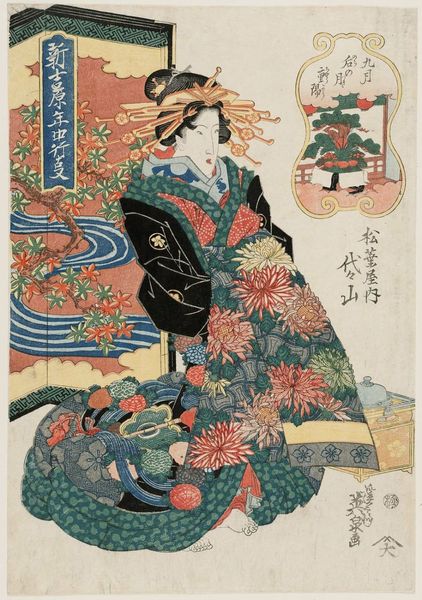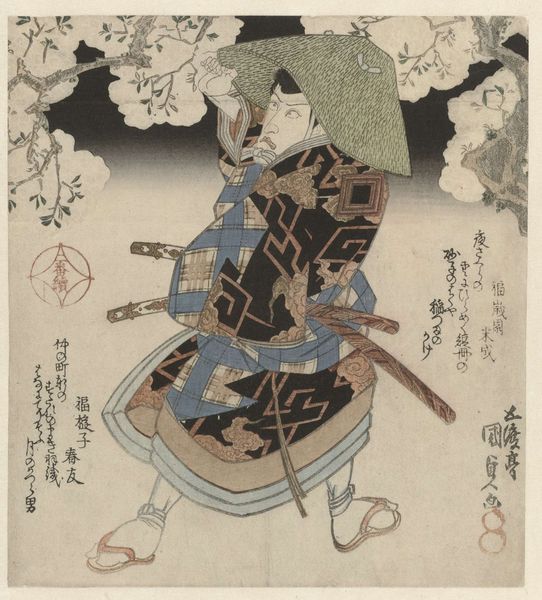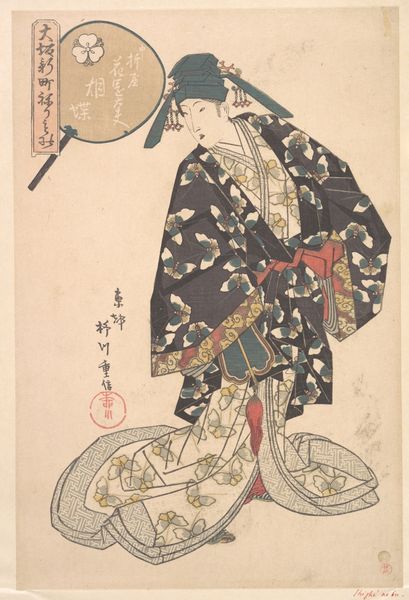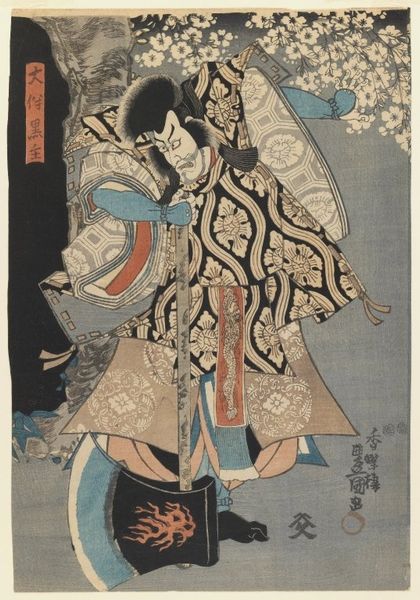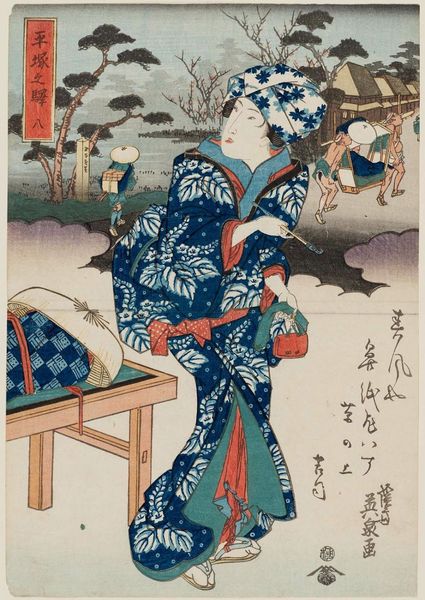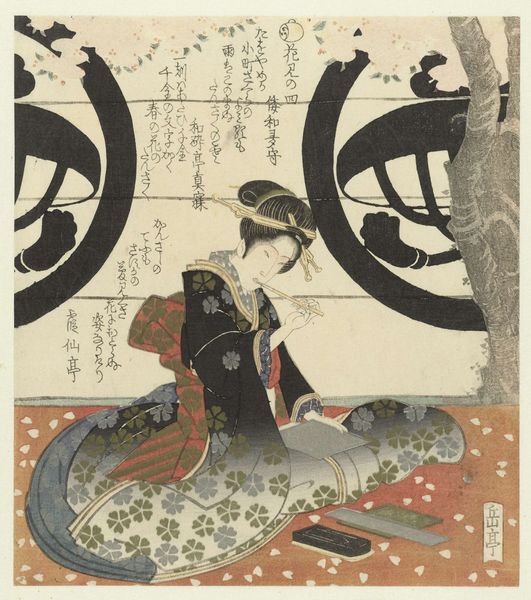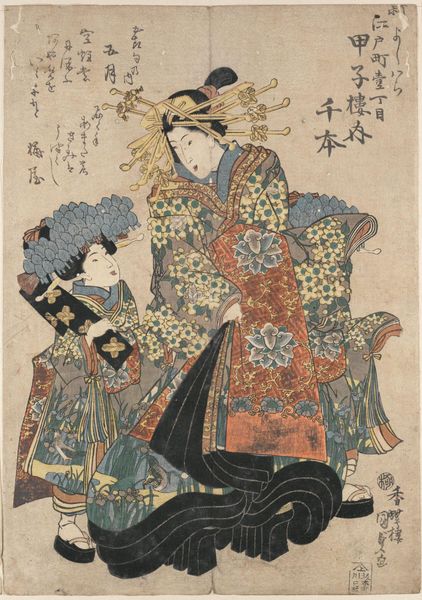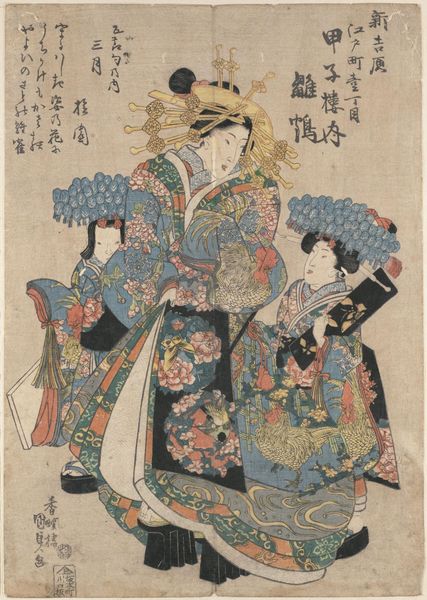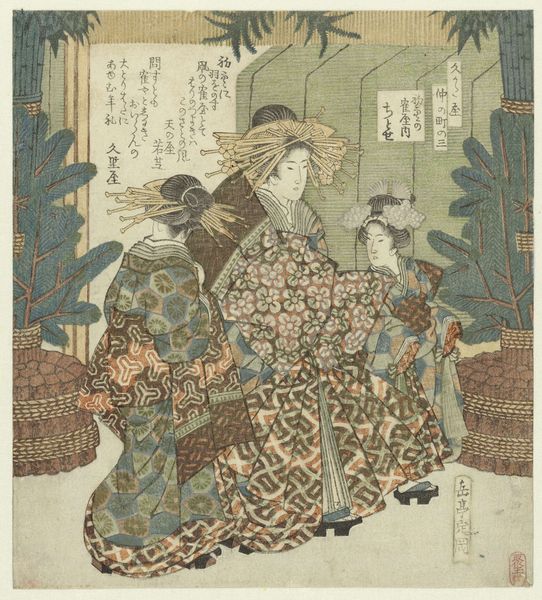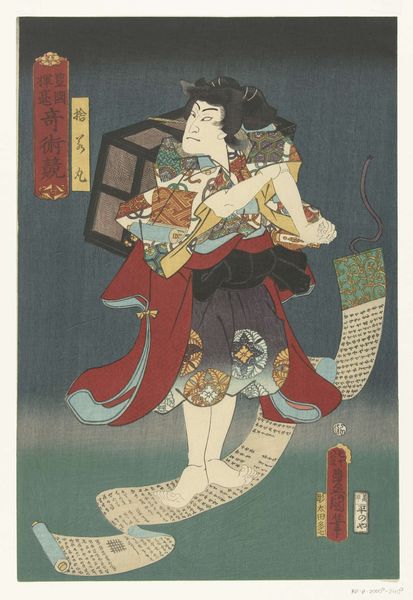
print, woodblock-print
#
portrait
# print
#
asian-art
#
landscape
#
ukiyo-e
#
woodblock-print
#
naive art
#
costume
#
watercolour illustration
Copyright: Public domain
Curator: This is Keisai Eisen's woodblock print "Fuji from Izu". Editor: It’s quite striking. The composition is very compressed; there's this fascinating interplay of flatness and depth, and an almost palpable weight from the figure and her garments. Curator: Yes, and Eisen was working within a vibrant ukiyo-e tradition that catered to the tastes of a growing urban audience. The floating world imagery offered them a reflection, sometimes idealized, sometimes gritty, of their own lives. Prints like these were relatively inexpensive and widely circulated, contributing to the rise of a popular visual culture. Editor: That's what is fascinating me, really, the textures: the dense, almost overwhelming pattern of the woman’s robe, and then the contrast of the smooth, flat colour fields in the backdrop. One has to consider the incredible skill involved in carving those woodblocks to achieve such detail, such layered depth with pigment. It makes you think about the labour involved, the division of labor... Curator: Indeed, and we shouldn't overlook the idealized depiction of Mount Fuji itself. Beyond its serene beauty, it’s an enduring symbol of Japan's identity. Pairing the geisha, with all her cultural and societal implications, next to that recognizable peak is no accident. Eisen’s works give you this sort of immediate connection to both spectacle and geography. Editor: Well, the pattern is mesmerizing but what strikes me too are these small objects and trinkets nestled at her feet: the shells, that little building or box with coral branches. Are they merely props, or are they further hinting at the materiality of beauty itself—its creation and consumption? The way things are laid, piled... is fascinating in itself. Curator: Possibly. In a broader sense, such depictions of courtesans also reveal certain realities of life. They offered glimpses into both glamour and constraints within the Edo period’s rigid social hierarchy. By looking closer into the subjects, we can analyze their roles, social attitudes and their positions within society. Editor: I hadn't considered it that deeply. Overall the process, in all its detail and its socio economic implications—it is still deeply satisfying. Curator: It is certainly worthwhile. Hopefully listeners will find the process as fruitful as we did.
Comments
No comments
Be the first to comment and join the conversation on the ultimate creative platform.
